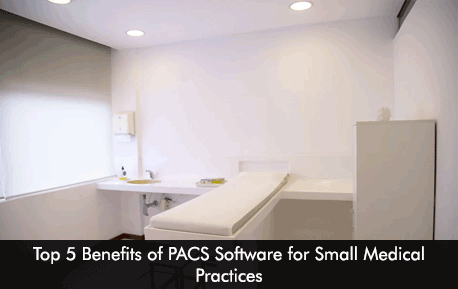PACS software solution is also known as Picture Archiving and Communication System has revolutionized how the healthcare system operates, aiding physicians to smoothly share medical imaging reports electronically. The robust medical imaging technology offers effective management and distribution of medical images. The PACS software system is being adopted by medical practices of all sizes as it helps to improve efficiencies and automate operational workflows as the need to manually retrieve or transport files is eliminated.
PACS Solutions and Small Medical Practices and Clinics
As a small medical practice setup, it is important to consider the right software investment that will yield profits and productivity in the long run, you want a PACS software solution that offers just the right features and capabilities for your practice size and has a user-friendly interface. The software system should be customizable to scale down to smaller facilities. The cost-effective PACS software solution should allow for integration with other systems to make way for seamless interfacing.
Basic Features Small Setups should look for in a PACS Software solution
The following tools need to be present in a cost-effective PACS software solution to meet the basic needs of small healthcare providers and also helping them operate efficiently.
- DICOM Compatibility
- DICOM Send
- DICOM Print
- Web-based access
- CD burning feature
- Query and Retrieve
- EMR Software and RIS Integration
Top 5 Benefits of PACS Software for small practices
It is important for small practices to stay competitive and improve patient care so they stay in business and increase patient volumes. Leveraging a PACS software system helps to optimize daily workflows and improve accuracy for patient diagnosis. Let’s look at the benefits one by one.
- Imaging functionalities improve viewing and analysis – The advanced digital imaging capabilities in a PACS software solution helps radiologists to get a better view of the patient situation which leads to a precise diagnosis. The software also allows the images to be customized to offer better examination and picture viewing.
- Data management is enhanced – Using a PACS software system helps small medical practices improve data management efficiencies as all previous results are stored electronically reducing duplicate images.
- Smooth access to patient images and reports – The PACS software systems allow physicians to have quick and easy access to patient images and reports. The immediate access allows tests to be conducted anywhere. The results can also be shared electronically with other care facilities supporting care coordination.
- User-friendly interface – Users find the PACS software system to be intuitive and user-friendly helping them organize and store image data with ease. Tools like image generation have helped radiologists to improve the accuracy of diagnosis resulting in positive patient outcome levels.
- Sequential data management – Physicians have access to chronological measures of patient history via the robust software system. This is useful when providers need to draw an analogy between two studies.
Moving Ahead
It is important that all patient data is backed up in case of an undesirable event. Small practices should make sure that their PACS software vendor offers remote backup services, which is a cost-effective option rather than purchasing a second PACS solution. Software vendors like Agfa and, Cerner Corp. provide seamless integration and scalability options for every practice size.







